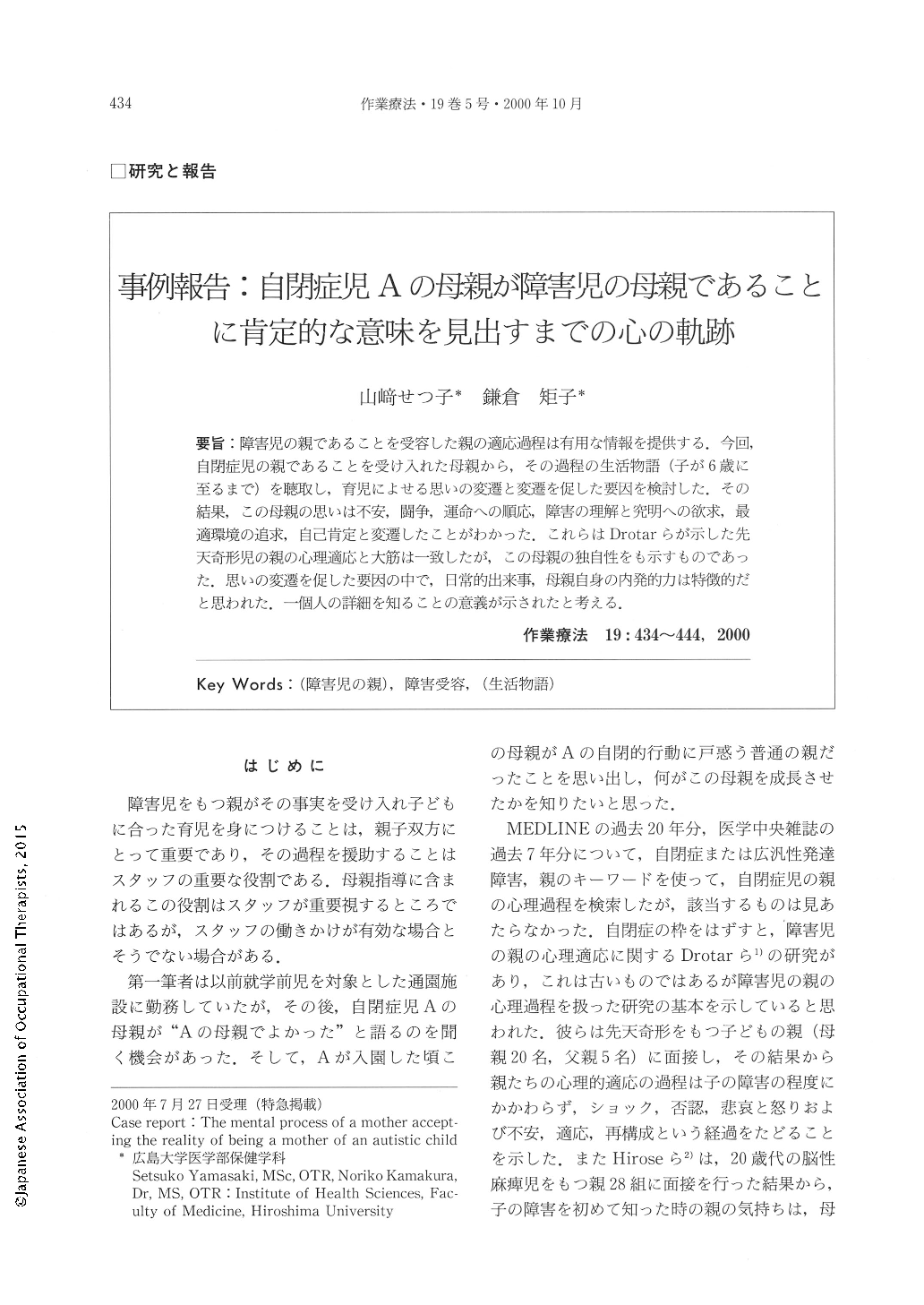- 著者
- 鎌倉 矩子
- 出版者
- 社団法人日本リハビリテーション医学会
- 雑誌
- リハビリテーション医学 : 日本リハビリテーション医学会誌 (ISSN:0034351X)
- 巻号頁・発行日
- vol.14, no.1, pp.57-72, 1977-01-18
The positional change of the wrist during activities using fingers is not precisely known. The lack of the control of the wrist could be one of the reasons why the quadriplegic patients are not actually using flexor hinge splints as expected. Minor attention to the role of the wrist in training the hemiplegic hands could make the affected hands less functional than potentially capable of. The purpose of this study is to provide some fundamental data regarding the functional adjustment of the wrist in the normal hand. 52 subjects volunteered. In Series I, discs of 5 different sizes, cylinderes of 3 different sizes, a pin and a card were transferred, rotated or turned on or between the various height. In Series II, 15 selected objects for the daily use were picked up, used and relocated. With use of the electrogoniometer developed for this study, the upper and lower terminal values (UTV, LTV) in extension-flexion plane of the wrist and the range of these two (U-L range) were measured for each task for each subject. The individual variation in each task demonstrated the normal distribution with the range of 40-50 degrees usually. Objects of ordinary sizes were transferred on the desk, with the wrist in sligth to moderate extension, demonstrating less than 10 degrees of U-L range. Thin, very small, very large or heavy objects located on the desk inclined the wrist position to flexion. Location of objects on higher horizontal plane or handling on the wall increased extension, usually without exceeding 65 degrees of extension. Consequently, the transfer task between planes of different height or different direction increased U-L range. Rotatory or turning task increased U-L range too, lowering LTV. Any tasks in Series II demonstrated the higher amount of U-L rane than simple transfer tasks on the desk in Series I. The amount of U-L ranges in use of selected objects for the daily use frequently exceeded the ones in single rotatory tasks or single transfer tasks between different planes, indicating the high frequency of the combination of these two factors in daily hand activities. The position of the wrist in the process of picking up selected objects for the daily use were quite similar to those of rotatory tasks in Series I. In use some tools, the position of the wrist was limited to only extension. However, many of selected objects for the daily use required the wide change of the wrist position including both flexion and extension. This was particularly so in objects handled on the surface of the body, such as a comb or toilet paper. For instance, in use of a pencil, the variation range demonstrated by 95% of subjects was [Ext. 15°-45°] in LTV, and [Ext. 30°-55°] in UTV, although in use of toilet paper, [Flex. 60°-25°] in LTV, and [Ext. 20°-60°] in UTV. In order that the position should not be deviated more than 3 standard deviations from the mean, the minimal dynamic range of the wrist was estimated to be Flex. 15°to Ext. 35°, (Flex. 25°to Ext. 40°in order to be within 2 standard deviations) allowing the associated finger movements.
- 著者
- 鎌倉 矩子
- 出版者
- 日本作業療法士協会
- 雑誌
- 作業療法 = The Journal of Japanese Occupational Therapy Association (ISSN:02894920)
- 巻号頁・発行日
- vol.29, no.3, pp.268-272, 2010-06-15
- 参考文献数
- 7
- 被引用文献数
- 1
- 著者
- 山崎 せつ子 鎌倉 矩子
- 出版者
- 日本作業療法士協会
- 雑誌
- 作業療法 (ISSN:02894920)
- 巻号頁・発行日
- vol.19, no.5, pp.434-444, 2000-10-15
要旨:障害児の親であることを受容した親の適応過程は有用な情報を提供する.今回,自閉症児の親であることを受け入れた母親から,その過程の生活物語(子が6歳に至るまで)を聴取し,育児によせる思いの変遷と変遷を促した要因を検討した.その結果,この母親の思いは不安,闘争,運命への順応,障害の理解と究明への欲求,最適環境の追求,自己肯定と変遷したことがわかった.これらはDrotarらが示した先天奇形児の親の心理適応と大筋は一致したが,この母親の独自性をも示すものであった.思いの変遷を促した要因の中で,日常的出来事,母親自身の内発的力は特徴的だと思われた.一個人の詳細を知ることの意義が示されたと考える.
